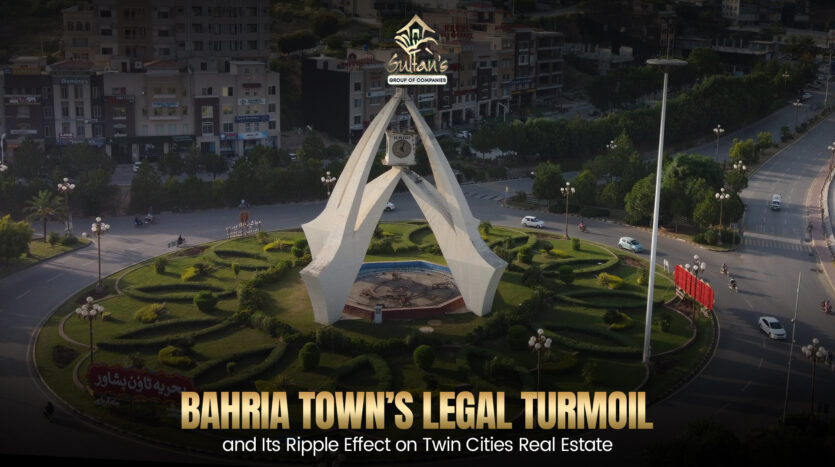Bahria Town’s Legal Turmoil and Its Ripple Effect on Twin Cities Real Estate
The real estate market in Rawalpindi and Islamabad is witnessing heightened caution as Bahria Town—one of Pakistan’s most prominent private housing projects—faces unprecedented legal and financial challenges. Recent developments have cast uncertainty over property values, investor sentiment, and the overall market trajectory in the twin cities.
On August 7, 2025, the National Accountability Bureau (NAB) initiated auctions of high-value Bahria Town properties as part of a court-mandated recovery process. These assets, tied to a previous plea agreement, fetched significant interest from bidders, with one property successfully sold and others receiving conditional bids totaling approximately Rs 2.27 billion. The Islamabad High Court further strengthened NAB’s position by dismissing petitions that sought to block the auctions.
In parallel, Malik Riaz, founder of Bahria Town, issued alarming public statements suggesting the possibility of a complete operational shutdown due to cash flow constraints. While this has not yet materialized, the mere prospect of such an outcome has unsettled both investors and residents. The market reaction has been swift: inquiries for new purchases have slowed, sellers are showing increased willingness to negotiate, and speculative buying has declined sharply.
Despite these pressures, prices within Bahria Town have not experienced the freefall some predicted. Instead, the market is displaying a “wait-and-see” stance, with potential buyers holding off until legal proceedings become clearer. This resilience may be attributed to the development’s existing infrastructure, amenities, and brand recognition—but prolonged uncertainty could erode these advantages.
Impact on the Wider Twin Cities Market
The ripple effects extend beyond Bahria Town’s boundaries. Competing housing schemes in DHA Islamabad, Gulberg Greens, and multi-story developments in the Islamabad Expressway corridor are experiencing a slight uptick in inquiries from investors seeking alternatives. This shift, however, is tempered by the fact that overall market confidence is linked to broader macroeconomic stability and regulatory clarity.
For Rawalpindi, areas like Saddar, Chaklala, and recently developed sectors near Ring Road alignments are emerging as safer bets for short-to-medium-term investments. Islamabad’s Zone 2 housing projects, alongside luxury vertical developments in the Blue Area, may also benefit from diverted investment flows.
Investor Takeaways
-
Diversify holdings – Avoid concentration in a single project or developer, no matter how reputable their past performance.
-
Focus on transparency – Prefer projects with clear NOC status, verified land titles, and strong governance.
-
Watch for buying opportunities – Market distress can create entry points, but only if legal risks are minimal and asset liquidity remains healthy.
In the coming weeks, market stability will largely hinge on how quickly Bahria Town’s leadership can resolve its disputes and reassure stakeholders. Until then, the twin cities’ property sector is likely to operate under a cloud of cautious optimism—where both risk and opportunity coexist in equal measure.
At Sultan’s Group of Companies, we continue to monitor these developments closely, guiding our clients with data-driven insights to navigate the evolving real estate landscape with confidence and clarity.

